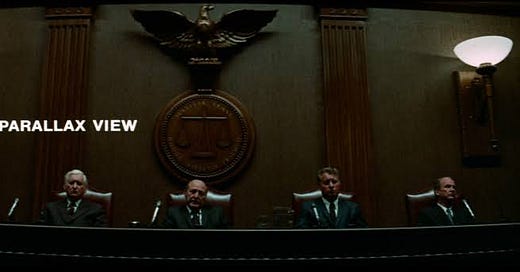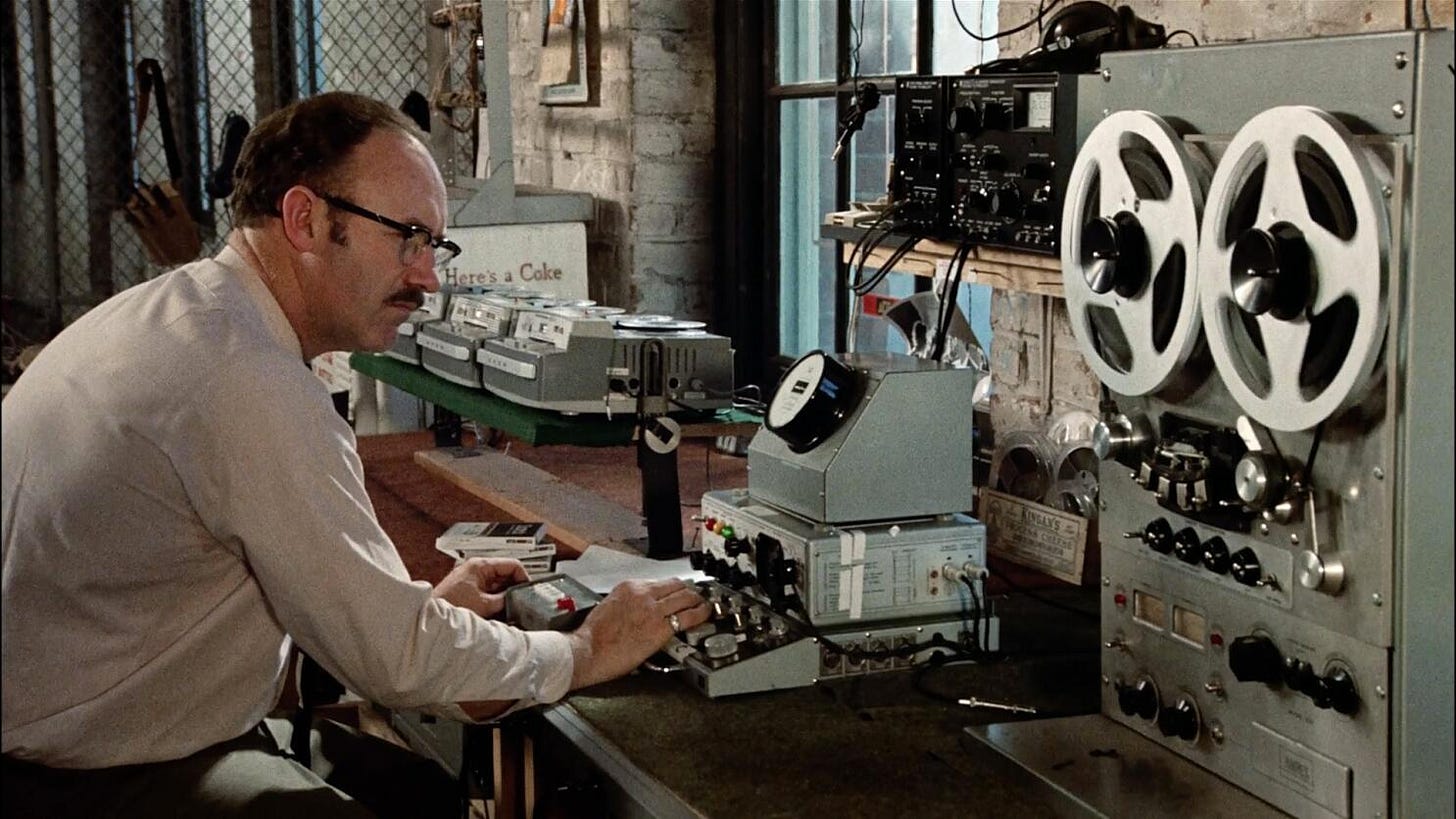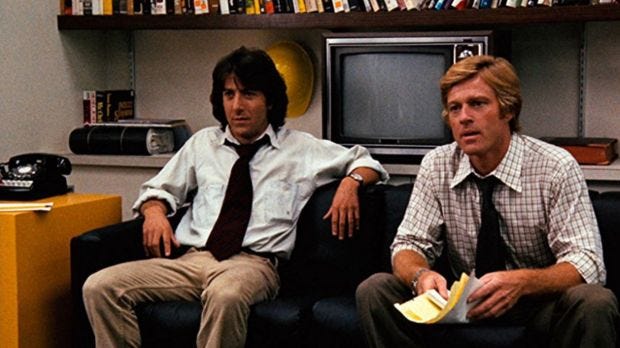70s Movie & How Art Makes the MOST Sense in Their Time
Recently, I’ve been watching movies made in the 1970s. It’s like peering through a window into the anxious soul of a decade. I was born in the 1970s, but it’s only as an adult—especially as a student of culture and storytelling—that I’ve come to appreciate just how much these films are shaped by, and in turn reflect, their historical moment. Films like The Parallax View, The Conversation, The French Connection, and All the President’s Men aren’t just gripping thrillers or crime dramas; they are artifacts of a society wrestling with paranoia, distrust, and the limits of knowledge. In watching these movies, I learned that cinema is always a mirror to its age, and that the fears and uncertainties of one era can seem almost quaint—or eerily prophetic—when viewed through the lens of another.
Movies as Mirrors of Their Time
One of the most striking lessons from watching these 1970s films is how directly they engage with the anxieties of their era. Just as Steven Spielberg’s Minority Report (2002) makes sense in the shadow of 9/11 and the Patriot Act—its surveillance state and pre-emptive justice echoing the fears and policies of the early 2000s—so too do the films of the 1970s reflect a nation reeling from Watergate, Vietnam, and a series of high-profile assassinations. The collapse of public trust in government and institutions, the sense of being watched or manipulated by unseen forces, and the fear that truth itself is elusive—these themes run like a current through the best films of the decade.
The Parallax View: Conspiracy and Powerlessness
The Parallax View (1974) is perhaps the quintessential 1970s paranoia thriller. Its story of a reporter investigating a shadowy corporation that specializes in political assassination is steeped in the era’s sense of dread and mistrust. The film’s protagonist, Joe Frady, is swept up in a labyrinthine plot where nothing is as it seems, and every answer leads only to deeper uncertainty. The movie’s bleak conclusion—where the hero is ultimately powerless against the faceless forces arrayed against him—captures the decade’s crisis of agency and the growing belief that the real centers of power are hidden, unaccountable, and possibly malevolent.
What struck me most is how the film’s central conspiracy, which would have felt shocking and plausible in the wake of the Kennedy and King assassinations, now seems almost understated. In an age of digital surveillance, deepfakes, and global disinformation campaigns, the tools of control in The Parallax View—personality tests, secret files, and brainwashing—feel almost analog, even innocent by comparison. Yet the film’s mood of suspicion and its depiction of a society where truth is always just out of reach remain chillingly relevant.
The Conversation: Surveillance and the Limits of Knowing
Francis Ford Coppola’s The Conversation (1974) is another masterpiece of 1970s anxiety. Its protagonist, Harry Caul, is a surveillance expert whose obsessive need for privacy and control ultimately leads to his unraveling. The film is a meditation on the limits of knowledge: what you secretly see and hear isn’t necessarily the truth. Caul’s recordings, which he believes will help him uncover a plot, only entangle him further in ambiguity and guilt.
Watching The Conversation this past week, I’m struck by how much the drama hinges on the painstaking, analog work of surveillance—reel-to-reel tapes, directional microphones, and hours spent listening and re-listening. In our era of instant digital tracking and AI-powered data analysis, Caul’s tools seem almost quaint, and the slowness of his investigation amplifies the tension. The film’s power, though, comes from its understanding that the real danger isn’t just being watched; it’s not knowing who’s watching, or why, or what they’ll do with what they learn.
The French Connection: Grit, Obsession, and Moral Ambiguity
The French Connection (1971) is a gritty crime drama that immerses viewers in the decaying urban landscape of New York City. Its protagonist, Detective Popeye Doyle, is obsessed with busting a heroin smuggling ring, but his relentless pursuit blurs the line between justice and obsession. The film’s documentary-style realism, its focus on flawed characters, and its depiction of institutional failure all speak to the disillusionment of the era.
What’s fascinating is how the film’s celebrated car chase—a masterpiece of tension and chaos—was achieved without the benefit of modern special effects or digital editing. The rawness of the action, the graininess of the film, and the moral ambiguity of the characters all contribute to a sense of authenticity that is hard to replicate today. At the same time, the police work in the film—stakeouts, hunches, and legwork—feels almost primitive compared to the forensic science and surveillance technology available now. The stakes are high, but the tools are blunt, which only heightens the sense of danger and uncertainty.
All the President’s Men: Journalism and the Pursuit of Truth
Finally, All the President’s Men (1976) dramatizes the real-life investigation of the Watergate scandal by Washington Post reporters Bob Woodward and Carl Bernstein. The film is a tribute to the power of journalism and the importance of a free press in a democracy. It’s also a portrait of a society on the brink of losing faith in its leaders and institutions. The painstaking work of Woodward and Bernstein—following leads, knocking on doors, piecing together fragments of information—stands in stark contrast to the instant news cycles and digital leaks of today.
Watching the film now, I’m struck by how much of the tension comes from what the reporters don’t know, and how hard it is for them to get the truth. In an age where information is everywhere, but trust is scarce, the film’s message about the importance of perseverance, skepticism, and integrity feels more urgent than ever.
Paranoia, Then and Now
What I learned from watching these movies is that the 1970s were a uniquely paranoid time, but also a time when filmmakers were willing to wrestle honestly with the uncertainties and anxieties of their world. The fears that drive the action in these films—conspiracy, surveillance, institutional failure—seem almost tame compared to the complexities of the present, where technology has made both investigation and manipulation more powerful than ever. Modern scientific investigation, with its databases and DNA evidence, has changed the nature of suspense; the slow, analog unraveling of a mystery in these films feels almost luxurious by comparison, but also more human.
Ultimately, these films remind me that every era has its own shadows, and that movies—at their best—help us see and understand the fears that shape us. The 1970s may have been a time of paranoia, but they were also a time of searching, questioning, and, sometimes, of hope. Art always speaks to Bothe the timeless and immediate. That’s a lesson worth remembering, no matter what decade we’re living in.






